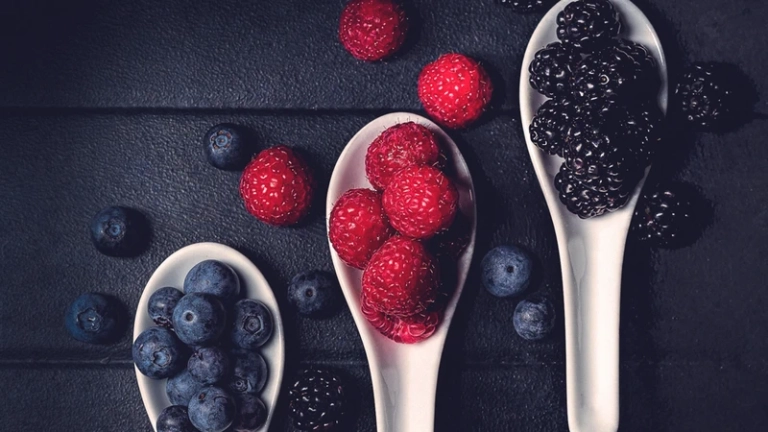Fibers, all the nutritional information media talk about it! And for good reason, these macronutrients play an important role in the mechanisms of digestion and participate effectively in improving transit.
NB : In the regulation of health claims, a food is considered “rich in fiber” when it contains more than 6% fiber, and “source of fiber” when it contains more than 3% fiber.
1. Passionfruit
This exotic egg-shaped fruit can be of different colors (yellow, orange and brown). We eat the pulp and the small seeds present in the fruit, the arils. Available throughout the year, this fragile fruit does not tolerate cooking well. Consume it raw, as is, or as part of a sophisticated dessert.
The passion fruit is rich in fiber with 10.4 g of fiber per 100 g of fruit, but it is also rich in vitamin C, a source of vitamin A and its protein content is also noteworthy since it remains one of the higher protein content of fresh fruits.
2. Cassis
These small black berries with purplish pulp and a sour taste are rich in polyphenols. Delicious in nature, they are most often consumed in jams, pies or liqueurs. This summer fruit par excellence remains the richest fruit in vitamin C! It is also rich in fiber and a source of potassium and manganese.
3. Gooseberry
This small, bright red, sometimes white, berry has juicy, tangy flesh. You can consume it from June to September, in clusters or in jelly.
Rich in fiber and particularly low in carbohydrates, this fruit is very interesting from a nutritional point of view.
4. Raspberry
These small red berries with a sweet and discreetly tangy sweetness can be eaten in all forms, plain, in jam, salad, pies…
Very low in calories, it is ideal when following a slimming program.
Rich in fiber and low in carbohydrates, it is also rich in vitamin C and a source of vitamin B9 and manganese.
5. Blackberry
The wild blackberry is particularly tasty and fragrant. This small black berry with a sweet and tangy flavor is available from July to October.
Its pigments with antioxidant properties are sought after both in food and in cosmetics.
Rich in fibre, it is also rich in manganese and a source of vitamins E, C and B9.
6. Prickly pear
Available from August to October, the prickly pear is a fruit with prickly skin, grainy flesh and numerous small black seeds.
This exotic fruit with a fresh and tangy taste is a source of fiber and magnesium.
7. Persimmon
This large fruit with smooth, shiny and colorful skin is particularly fragile. It is imperative to consume it as soon as it is ripe.
This fruit is remarkable for its content of active components, such as amino acids, carotenoids, flavonoids, tannins, catechins.
Available from October to January, it is also a source of fibre, vitamin C and manganese.
8. Quince
This little-known fruit has the originality of being eaten only cooked, in jellies and compotes. With its low sugar content and tangy taste, it is particularly appreciated.
Available only from October to November, take the opportunity to cook and store it during this period in order to enjoy it all year round.
Source of fiber and vitamin C, it is recommended in compote to fight against temporary diarrhea and those of infants.
9. Banana
Consumed all year round and in all countries of the world, this fruit remains an exceptional source of energy.
Rich in starch, the banana is particularly nutritious. Favorite dessert of the French, it is a source of fiber, vitamin B6, potassium and manganese.
10. Pear
This popular fruit remains available all year round. Very low in calories, it is as tasty plain as it is to enhance sweet and savory preparations.
Its juicy and sweet flesh is particularly appreciated. It is a source of fiber.













